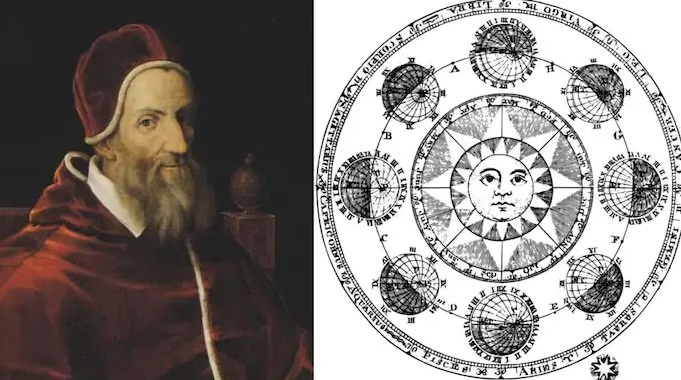The 21st century has stepped into its 25th year on a Wednesday. As the day, month, and year turned, the calendar marked January 1, 2025. A celebratory atmosphere enveloped the globe as people exchanged greetings and hoped for prosperity in the coming year. Amidst this, BJP spokesperson Sudhanshu Trivedi shared his own unique New Year wishes at the BJP headquarters, capturing everyone's attention with his distinctive expression.
Understanding the Significance of Sudhanshu Trivedi's New Year Greeting
BJP spokesperson Sudhanshu Trivedi marked the New Year on January 1st with an extraordinary style of greeting. His unique approach went viral almost immediately. In a press conference at the BJP headquarters, Trivedi stated, "Friends, today is January 1st. I extend my greetings on the day dedicated to the Roman deity Janus, conceptualized originally by Roman King Numa Pompilius, initiated by Julius Caesar, corrected by Pope Gregory XIII in 1582, and later adopted by the British in 1752. It marks the start of the English New Year."
The Historical Saga of the Calendar
The phrases used by Sudhanshu Trivedi to convey New Year greetings intricately tell the tale of the Gregorian Calendar. The seemingly simple task of setting dates has seen its fair share of complexities. With time, its inaccuracies became apparent and were addressed before it was accepted globally. Even today, not all 12 months in the Gregorian Calendar have the same number of days. While some months have 31 days, others have 30; February has fewer, with only 28 days, save for a leap year every four years when it gains an extra day, making February 29 days.
Let's delve into the expansive history of the calendar that’s been embraced worldwide for various operations.

Source: aajtak
Janus: The Roman God of Time
In ancient Roman religion and mythology, Janus is a prominent deity. Commonly known as Ianus, the Roman alphabet initially lacked a 'J', and as scripts evolved from Latin to modern English, Ianus became Janus. Known as the deity of beginnings and endings, Janus straddles the line between the past and the future. While Janus stands in the present, his two faces symbolize duality, with one side often depicted as dark and bearded, representing the past, and the other bright and youthful, symbolizing the future.
January: Named by Roman King Numa Pompilius
This deity lent its name to the start of the Gregorian Calendar, with January named for Janus. Roman king Numa Pompilius reformed the calendar in 713 BCE, designating January as the year's first month, in honor of Janus as a symbol of change and time.
January: The Month of Janus
January, celebrated as a month of new beginnings, plans, and transformations, echoes the essence of Janus. Like the two faces of Janus, January links the old year to the new, offering a vision in both directions. In ancient Rome, Janus was worshipped on the year's first day, praying for auspicious beginnings. Janus Temple, with its twelve altars, was foundational in dividing the year into twelve months.
Read More:
Explore the viral video of BJP's Sudhanshu Trivedi offering New Year wishes in the name of "Roman deity Janus."
Numa Pompilius: The Second King of Rome
The Numa Pompilius mentioned by Sudhanshu Trivedi is the second king of ancient Rome. Esteemed for his peaceful reign and religious reforms, Numa succeeded Romulus, Rome's founding king, ruling from roughly 715 BCE to 673 BCE.
Numa Pompilius's Calendar Reforms
Born into the Sabine tribe, Numa Pompilius was known for his simplicity, humility, and piety. Upon succeeding the war-oriented Romulus, he shifted the focus to peace and religion. Historians commend Numa for his peaceful and religiously progressive reign. His most notable contribution was structuring the Roman calendar by adding twelve lunar months, including January (Janus) and February (Februa). This refinement rendered the calendar more precise and aligned with various religious festivals.
Before Numa's intervention, the Roman calendar was functional but impractical, crafted by Romulus, Rome's founder, and known as the Romulan Calendar, plagued by deficiencies. It included only ten months.
Comprised of 304 days, the remaining 61 were disregarded in the calendar. Falling in winter, these days were deemed inconsistent and unaligned with seasonal cycles, affecting social and religious customs.
The monthly breakdown was:
Martius (March) – 31 daysAprilis (April) – 30 daysMaius (May) – 31 daysJunius (June) – 30 daysQuintilis (July) – 31 daysSextilis (August) – 30 daysSeptember – 30 daysOctober – 31 daysNovember – 30 daysDecember – 30 daysMarch, the first month, was named after Mars, the god of war.
Winter Was Not Part of the Early Calendar
January and February were excluded from the calendar, considered "outside of time" due to their lack of importance for agriculture and military activities; as a result, these months did not align with the solar year (365.25 days). The extra days remained "timeless," leading to disorganized social and religious engagements.
How Did Month Changes Occur?
Despite being agriculturally driven, Roman society's earlier calendar failed to accurately reflect seasons and farming cycles. The calendar's mismatch with both the lunar year (354 days) and the solar year (365.25 days) necessitated Numa's introduction of January (Januarius) and February (Februarius), creating a 12-month, approximately 355-day system. By introducing "Mercedonius," an occasional leap month, he aligned the calendar more closely with lunar cycles, yet full accuracy remained elusive. Still, it was a significant improvement over the initial Romulan calendar.
How Did They Name the Months?
Martius (March): Named for Mars, the Roman god of war, this was the first month, associated with new beginnings and military pursuits.Aprilis (April): Derived from "aperire," meaning "to open," reflecting the blooming season in Rome.Maius (May): Named after the Roman goddess Maia, the embodiment of growth and earth.Junius (June): Named for Juno, the protector of marriage, family, and women.Quintilis (July): Originally the fifth month (from Latin "quintus"), later renamed July in honor of Julius Caesar, who decreed the change as the first Roman emperor.Sextilis (August): The sixth month (from Latin "sextus"), renamed August to honor Emperor Augustus.September: The seventh month (from Latin "septem"), maintaining its original numerical root.October: The eighth month (from Latin "octo"), again preserving the numerical naming.November: The ninth month (from Latin "novem").December: The tenth month (from Latin "decem").Januarius (January): Named for Janus, the deity of transitions and gateways, this was established as the first month by Numa's reforms, serving as a bridge from past to future.Februarius (February): This name stems from Februa, a Roman purification ritual for cleansing the body and home.

Source: aajtak
As the calendar evolved into its modern form, the months we know today as January, February, March, April, May, June, July, August, September, October, November, and December took shape.
When Julius Caesar Revamped the Calendar
In 45 BCE, Julius Caesar enacted significant reforms that birthed the Julian Calendar, aimed at addressing the inaccuracies of the Roman calendar and aligning with the solar year (365.25 days).
Despite Numa Pompilius's prior refinements, the Roman calendar remained 355 days. The rudimentary adjustment involved adding the leap month Mercedonius alternately, yet poor management often disallowed true alignment.
The Roman pontiffs, responsible for adding extra months, manipulated it for political gain, causing misplaced festivals and seasons. To address these challenges, Julius Caesar sought the expertise of astronomer Sosigenes during his Egyptian endeavors to hone astrological accuracy.
Crafting a calendar lasting 365.25 days, they aligned it with the solar year, integrating a leap day every four years. For the first time, months varied between 30 and 31 days, with February following its current 28-day pattern but accommodating a leap year.
The Year of Confusion in 46 BCE, stretching across 445 days, rectified seasonal misalignments post-revision, ensuring suitable festival placements.
Renaming Quintilis to July
In the wake of Julius Caesar's adoption of the revised calendar, Quintilis was renamed July in his honor. With 365 days defining a standard year and every fourth year gaining an additional February day, each month was distributed as follows: January, March, May, July, August, October, and December each encompassed 31 days, while April, June, September, and November contained 30. Widely adopted across the Roman Empire and beyond, the Julian Calendar held sway for centuries.

Source: aajtak
Pope Gregory XIII's Reforms
In 1582, Pope Gregory XIII introduced what we know today as the Gregorian Calendar, addressing the Julian Calendar’s faults.
Despite being more precise than its predecessor, the Julian Calendar wasn't entirely flawless. Although a day was added every fourth year, rendering the annual length 365.25 days, an inevitable mismatch grew: a solar year is precisely 365.24219 days long. This discrepancy caused calendar drift, accumulating a day's difference over approximately 128 years, complicating Easter celebrations, dependent on the vernal equinox.
By the 16th century, this resulted in a 10-day misalignment. To remedy this, Pope Gregory XIII assembled a team of astronomers and mathematicians to refine the calendar.
The British Embraced the Gregorian Calendar in 1752
To sync with the solar year, ten days were expunged, advancing the date from October 4, 1582, directly to October 15, 1582. The Gregorian Calendar's enhancements were embraced in 1582 and reached British shores by 1752, henceforth labeled the English New Year.
The Indian Calendar's Timeless Accuracy
Post-independence, India adopted the Gregorian Calendar for bureaucratic processes yet continues to rely on the Panchang for religious festivities, embodying lunar and solar elements, with 30-day months divided into fortnights, hours, ghatis, and auspicious times—unmatched in celestial precision, necessitating no further alterations.




